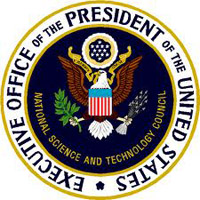
Developed through a collaborative interagency process the plan notes the critical importance of advanced manufacturing on U.S. economic strength, global competitiveness, and national security. The strategic plan specifies five key inter-related objectives in which a large number of Federal agencies, coordinated through the NSTC, will have important roles to play in the implementation of the strategy. These objectives include:
- Accelerate investment in advanced manufacturing technology, especially by small and medium-sized manufacturing enterprises, by fostering more effective use of Federal capabilities and facilities, including early procurement by Federal agencies of cutting-edge products.
- Expand the number of workers who have the skills needed by a growing advanced manufactur¬ing sector and make the education and training system more responsive to the demand for skills.
- Create and support national and regional public-private, government-industry-academic partnerships to accelerate investment in and deployment of advanced manufacturing technologies.
- Optimize the Federal government’s advanced manufacturing investment by taking a portfolio perspective across agencies and adjusting accordingly.
- Increase total U.S. public and private investments in advanced manufacturing research and development (R&D).
Keeping in line with many concepts routinely promoted by the NNN and many other stakeholder organizations, the strategy further cites as a core principle the need for a cohesive approach to research, development and commercialization. This includes foremost an emphasis on commercialization of federal investments in fundamental science at national labs and universities, along with stronger emphasis on R&D targeting improved manufacturing processes and supporting scale-up. As part of this emphasis, the strategy cites the need for better access to user facilities equipped with advanced manufacturing platforms, along with focused education and training programs to fill the needs for a highly-skilled manufacturing workforce. Related to this topic, the strategic plan addresses the benefits of industry or regional clusters as a means to accelerate the innovation cycle, particularly for small- and medium-sized enterprises (SMEs).
With increased complexities within global markets and competition, many countries have fostered consortia based models wherein public-private investments are used to accelerate the innovation cycle, shortening the time to commercial scale-up. Under such a cluster model, possibly with some type of advanced manufacturing demonstration facility, the U.S. strategic plan encourages joint public–private strategic planning and prioritization of opportunities to strengthen industry or regional cluster effectiveness, ultimately reducing the risk for SMEs in adopting advanced manufacturing platforms. Coordinating public and private investments related to advanced manufacturing can lead to benefits for both sectors, for instance, by ensuring that all key players participate in standard-setting and accelerating standards adoption. Federal investments in applied research, and in demonstration facilities to which manufacturers have access, can accelerate commercialization of new advanced manufacturing processes and stimulate private investment in both plant and equipment.
Nanomanufacturing is positioned broadly within many of the areas discussed in the strategic plan, including materials processing, platforms, and processes. Establishment of various forms of public-private partnerships, along with demonstration facilities enabling industry to work closely with academia and government researchers to transition and scale emerging technologies, has the potential to transform industrial manufacturing and infrastructure. In addition, these partnerships will establish new models for a sustainable U.S. innovation cycle that maintains and attracts advanced manufacturing.
